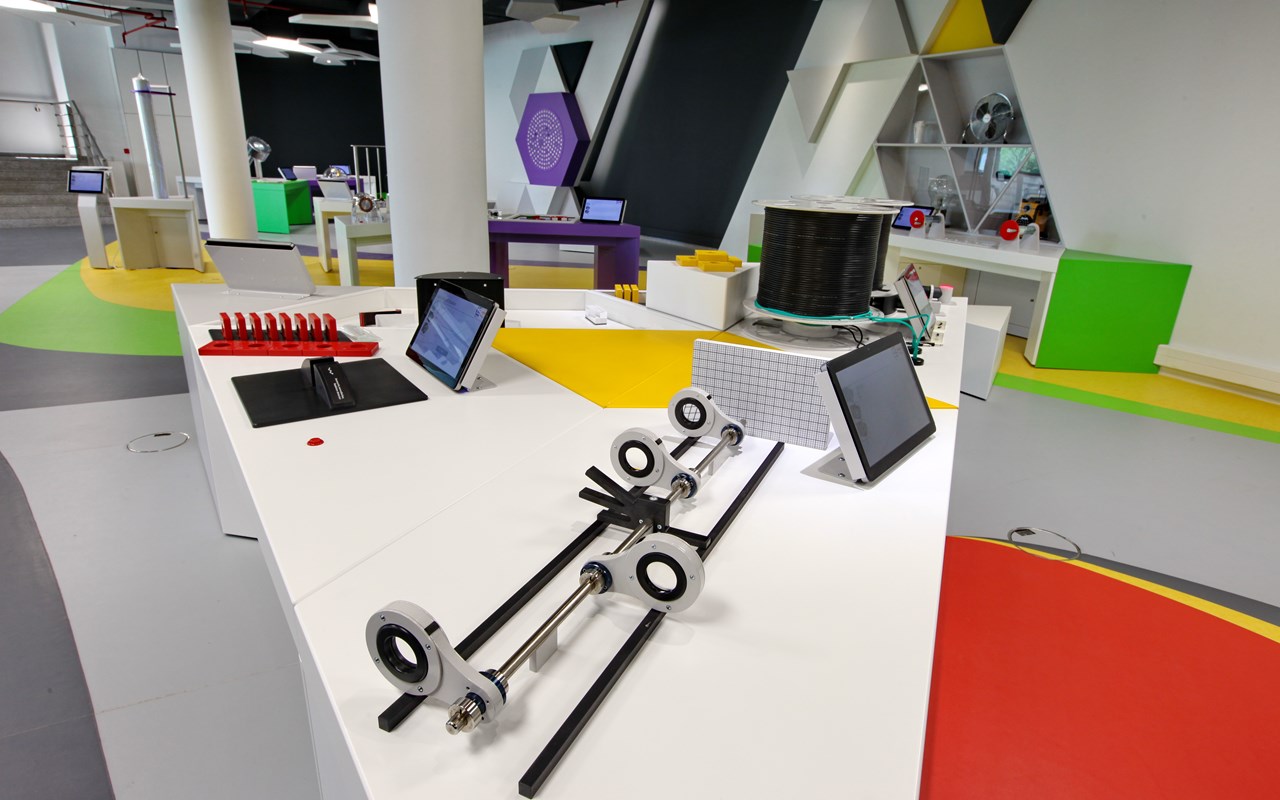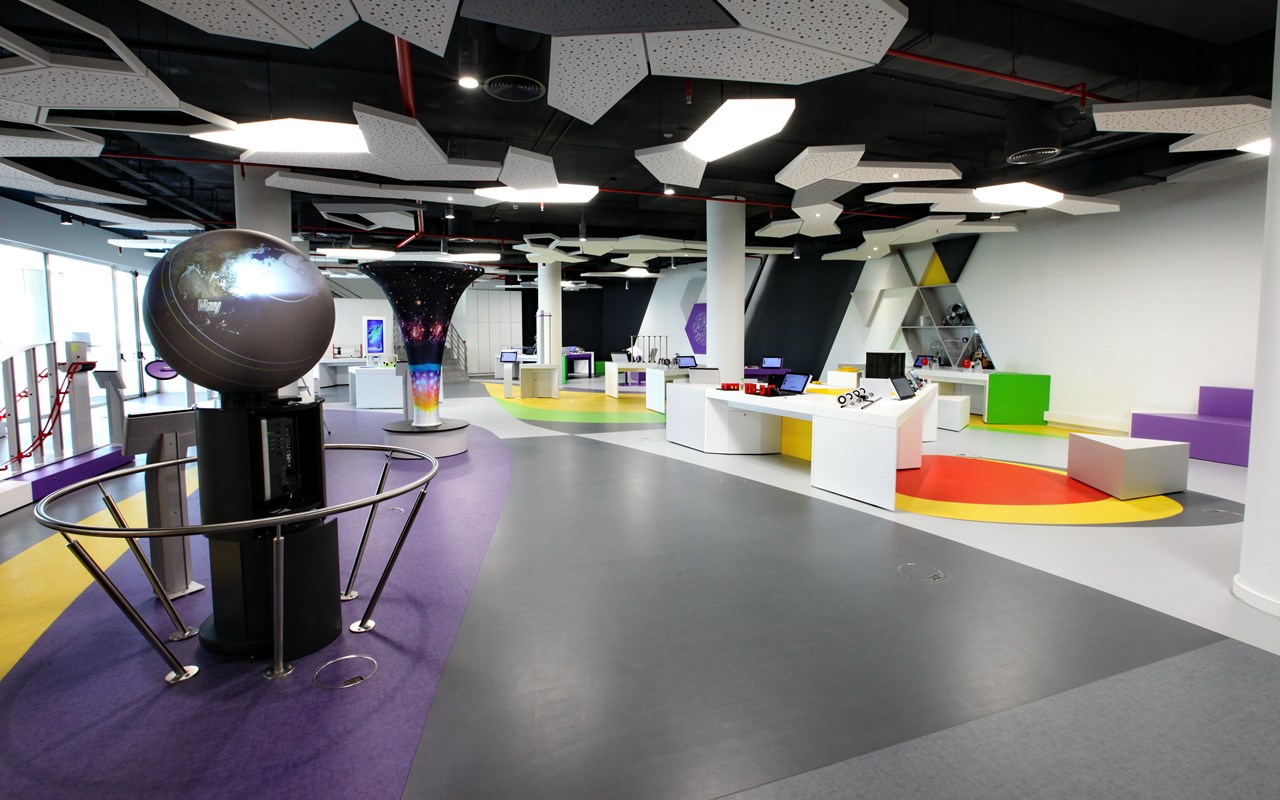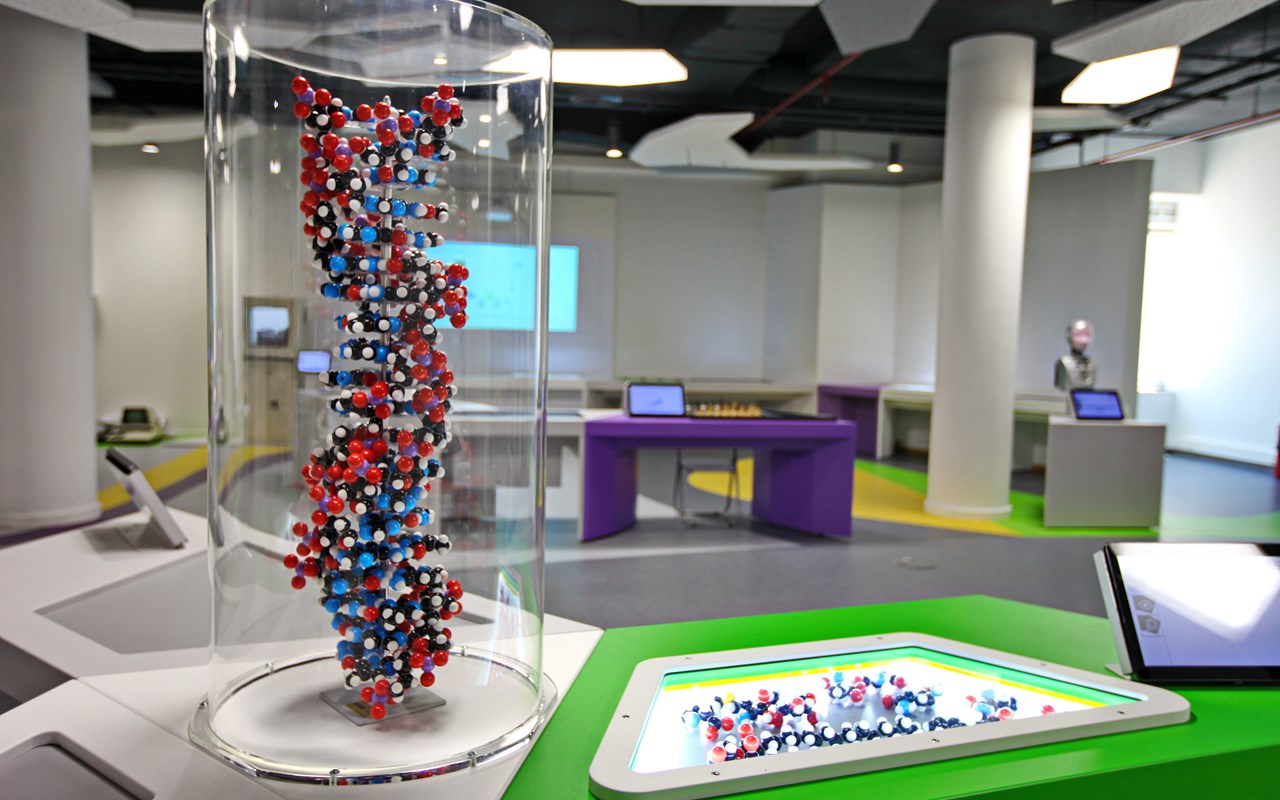stc
Exhibits
Interactive Physics, Chemistry, Biology, Mathematics, Computer Science and Robotics exhibits
Introduce yourself to the world of science and modern technology through a journey of exploration, experimentation and observation. Two floors with 57 interactive exhibits are ready to take you through a journey across natural sciences.

The interactive exhibits offer people the opportunity to become familiar with Science and Technology and begin to gain some understanding by controlling laboratory apparatus and machinery. Visitors of all ages can conduct experiments, gather data, select options, form conclusions, provide input and are thus given the opportunity to observe, explore and get a hands-on experience of basic scientific principles, as well as up-to-date technological achievements.
Control the Physics hands-on exhibits and explore fundamental principles of mechanics and electromagnetism, experiment with sound and light, take advantage of renewable energy sources, generate electricity, see lightning strike before your eyes, visualize sound waves and observe the evolution of the universe.
Interact with the Chemistry and Biology exhibits to familiarize yourself with the building blocks of matter and life, look through microscopes and “synthesize” DNA and other molecules.
Visit the Mathematics exhibits and fuel your imagination by solving mathematical puzzles and riddles; apply mathematical theorems, explore geometric and topological properties of surfaces and produce sine waves.
Observe robots in action, learn about computer evolution, build a fast computer piece by piece, decipher Caesar’s cipher, interact with robots by handling the Computer Science and Robotics exhibits.
Opening Hours
School Groups: Monday-Friday, 09.00-16.30 (last entry at 15.00)
General Public: Saturday-Sunday, 11.00-19.00 (last entry at 17.00, recommended minimum time for visit: 90 minutes).

Science and Technology Center - Ground floor
Photo Credits: e.f_
Ground floor
Physics
This floor includes Physics exhibits covering a wide range of fields, such as classical and quantum Mechanics, Electromagnetism, Light, Optics, Sound, Cosmology and Renewable Energy Sources. Visitors explore, experiment and become familiar with classical phenomena, as well as with applications of modern physics.
Amongst others, visitors can examine topics such as accelerated motion and free fall, spectra of gas discharges, optical fibres, the electromagnetic spectrum, sound propagation and standing waves. Explore how electricity generators, dynamos and optical fibres work, and produce electricity from water waves.
Mechanics
Pendulums
Levers
Inclined plane
Brachistochrone
Free fall
Gyroscopic bicycle
Electromagnetism
Crank power
Magnetic field
Electric motor
Faraday’s law
Lenz’s law
Crackle tube
Light
Electromagnetic spectrum
Emission spectra
Play with light
Absorption of radiation
Invisibility
Optical fibres
Sound
Sound waves
Sound in vacuum?
Chladni patterns
Kundt’s tube
Doppler effect
The Universe
Orb
Evolution of the Universe

Science & Technology Center - First floor
Photo Credits: e.f_
First floor
Chemistry, Biology, Mathematics, Computer Science, Robotics
The Chemistry and Biology exhibits allow the visitor to create chemical compounds using the elements of the periodic table, to get to know the building blocks of life, such as DNA and the cell, to observe microscopic structures using professional microscopes and to become familiar with some basic functions of life, such as respiration and photosynthesis.
Furthermore, the visitor can explore the magical world of Mathematics, by solving mathematical riddles and puzzles, apply mathematical theorems and discover modern fields of Mathematics, such as Topology and Non-Euclidian Geometries.
Visitors can also explore the history and evolution of Computer Technology, utilize different components and build their own computer, use logic gates in order to build digital circuits, solve algorithmic problems and become familiar with basic cryptography methods.
Finally, visitors can become familiar with the world of Robotics and its applications. They can program robots to solve mazes and mathematical puzzles, explore applications of robotic sensors and interact with a humanoid that recognizes facial expressions.
Biology - Chemistry
Periodic table
Building blocks of life
Cell
DNA
Human genome
Evolution of life
Looking into the microcosm
Photosynthesis and respiration
Mathematics
Pythagorean theorem
Number π
Sinusoidal function
Conic sections
Normal (Gauss) distribution
Non-euclidean geometries
Topology
Gravity well
Math games
Travelling salesman problem
“Good Will Hunting” problem
Computer Science
Computers’ evolution
Computer hardware
Logic gates
Algorithmic puzzle solving
Cryptography
Checkmate
Face tracking
Robotics
Sensors
Robot in maze
Training Sawyer
stc


